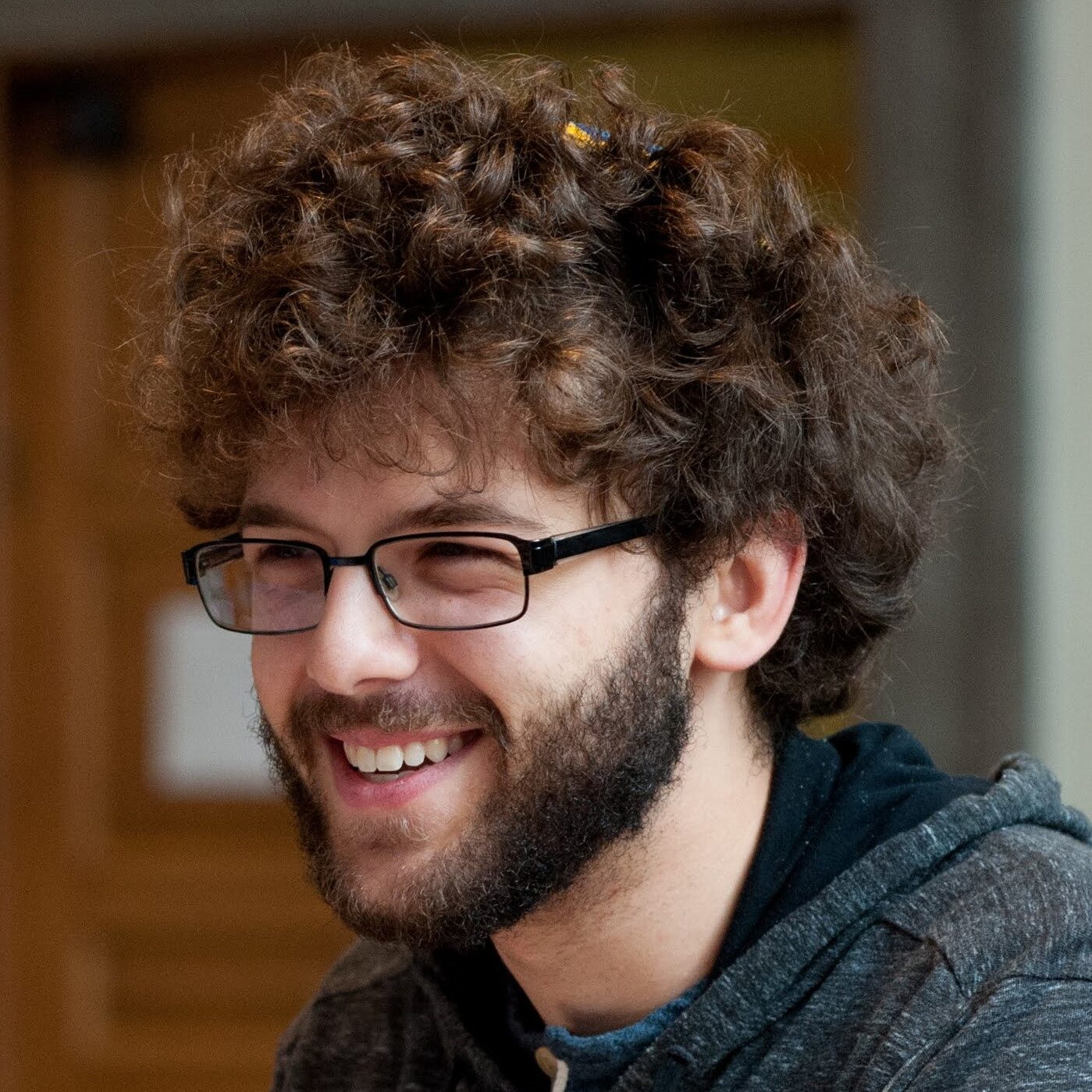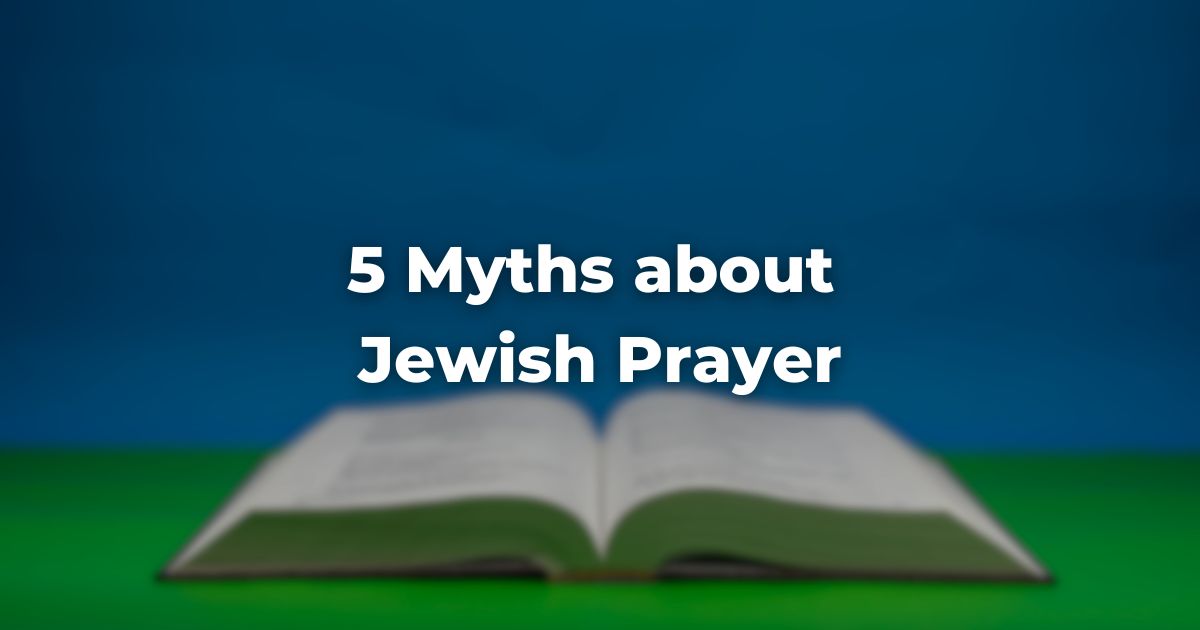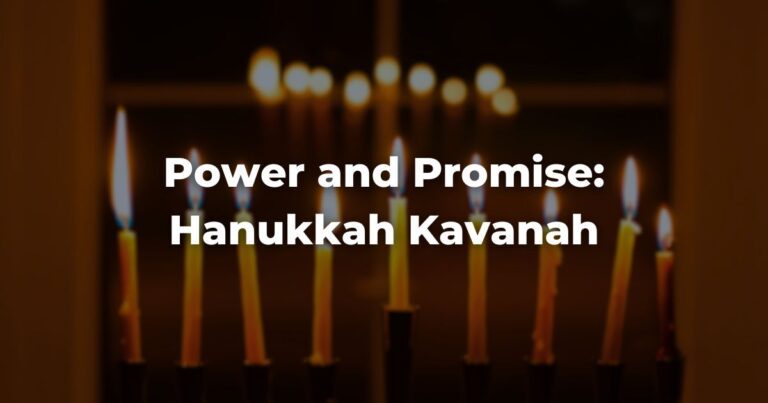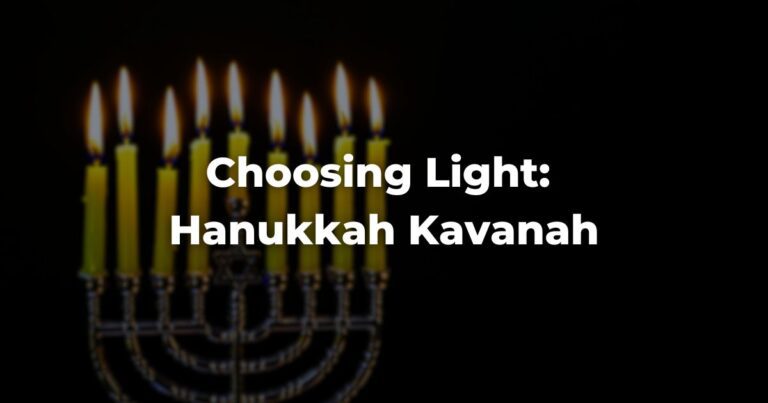Despite being one of the primary ways Jews experience Judaism, prayer is one of the most misunderstood parts of Jewish life.
Shame and secrecy surround the way many Jews interact with prayer, not knowing if they are doing it “right” because they don’t speak Hebrew, worried that others know much more than they do and are judging them.
In the absence of real knowledge, rumors and misinformation can seep into the psyche of the Jewish worshipper, poisoning the experience and the relationships they have with G-d and their community.
Here are five myths about prayer we would do well to do away with in the synagogue:
1. Prayer has to be in Hebrew
Many people believe that to pray as a Jew means to speak Hebrew words, and that anything other than that is less than ideal, or even wrong.
This is not true. Hebrew is the love language of the Jewish people and G-d. It is the holy writ, the lashon kodesh, but it is not the be-all and end-all of Jewish prayer.
A person can pray in any language that they understand, especially if they are in a minyan, a prayer quorum of ten Jewish adults. So long as you have your community around you, you will find little opposition in our tradition to using the English translation in your siddur to pray (see: Sotah 33a and SA OH 101).
That’s why—assuming you’re using the Sim Shalom or Lev Shalem— Rabbi Jules Harlow’s translation is so poetic rather than perfectly literal. The goal of the translation, according to the introduction to the Sim Shalom, was to “present the meaning of the original text to those who do not understand Hebrew and to provide a devotional text in English which will help to involve them in prayer.” The translation is beautiful on purpose, you should feel free to read from it.
You also shouldn’t be ashamed or secretive about praying in a language other than Hebrew. That said, Hebrew is still important. Hebrew is the only language in the world, according to our tradition, whose use in prayer is effective even if the speaker doesn’t understand every word. There is a holy potency to the Hebrew language which other languages, while still valid, do not have.
While you can pray in whatever language you want, let that flexibility come with the strong encouragement to eventually transition into Hebrew.
2. It has to be what’s on the page
Let’s not get it twisted: it is important that you say what is on the page, in any language, but that does not need to be the sum total of your words. We Jews are required to pray, and the words in the siddur are not random or unimportant for fulfilling that requirement.
That said, there are several places in the siddur, especially in and around the Amidah, which welcome private and personal additions and supplications. The end of the Amidah, during Tachanun, recited on weekdays, the middle of the Amidah’s blessings for healing (rofeh cholim), livelihood (mevarech hashanim), and hearing our prayer (shomeah t’fillah) are all traditional places for inserting your own needs.
The prayer for healing even has its own suggested insertion where you can add the names of loved ones in need of healing.
More expansively, during the Amidah if any of the blessings’ themes speak to your needs, you can interpolate in the middle of each of them, before the “Baruch atah” or “Praised/Blessed are You” phrase. For example:
[The Traditional text] Restore our judges as in the days of old, restore our counselors as in former times. Remove from us sorrow and anguish. Reign alone over us with lovingkindness; with justice and mercy sustain our cause.
[Personal inclusion] G-d, I am so worried that those who are corrupt and hold disdain for the rule of law are allowed to get away with their crimes. Bring them to justice, give our judges the strength and courage they need to see justice done. Also, there’s this person at work who treats me with such malice and I don’t know how to reconcile with them or get the company to take their bad behavior seriously. Help me.
[Traditional Text] Praised are you, G-d, Ruler who loves justice.
3. It’s “prayer”
What does the word “pray” even mean? Something like ‘beseech’ or ‘petition’. While Jewish prayer has an important element of petition in it, that is not actually the main theme of Jewish prayer.
It is said often, but it’s worth saying again here: the verb “to pray” in Hebrew is “l’hitpalel” from which comes the word tefillah, often translated as ‘prayer.’ L’hitpalel is a reflexive verb, something someone does to themselves. And what is it they do to themselves? Judge.
The Hebrew word for prayer is related to self-judgement. Tefillah is introspection.
Tefillah is an enjoinder against our worst instincts and a reminder of our better selves. It is not some divine slot machine into which we put words and get what we want. It is admonishment, an invitation to check yourself.
Rabbi Abraham Joshua Heschel wrote, “Man in prayer does not seek to impose his will upon God; he seeks to impose God’s will and mercy upon himself. Prayer is necessary to make us aware of our failures, backsliding, transgressions, sins.”
Perhaps its thrice-daily regularity makes more sense with this in mind. Acquisitiveness is not an instinct our tradition wants us to engage with three times per day, but our spiritual discipline certainly is.
4. There’s no room for innovation
We saw before that there is room for personal additions to one’s private amidah, but that is not the entirety of our tradition’s capacity for innovation.
Yes, our tradition places a high value on keeping the prayer book largely the same from generation to generation, but over time we have seen so much liturgical creativity that we might not even think of it as such. The Aleinu was, at one point, just a poem written by Rav for Rosh Hashanah, but the Jewish people found it so wonderful and useful that we’ve placed it at the end of every prayer service.
The same is true for our beloved Kabbalat Shabbat service which occurs each Friday night. It was created in the way we know it today by the mystics of Sefat in the 16th century or so. Even in the last hundred years, Jewish people have written prayers for the State of Israel, said Hallel on Yom Haatzmaut, Israel’s Independence Day, and included the matriarchs in the first blessing of the Amidah.
None of these innovations have come without controversy and differing opinions—it is hard to know which changes are valid or wise without the benefit of hindsight—but the prayer book has continued to evolve and grow as we have.
5. It’s boring
I will admit, sometimes our prayer services can feel long and tedious. How many kaddishes are we at now? Do we really need to say Aleinu and Adon Olam? And why did the person leading choose that incredibly slow tune when they know the tuna at kiddush is waiting for us?!
That being said, the prayer book is a book of poetry, some of the most moving and heartfelt poetry of our people’s history. It is worth taking the time, especially when the leader has chosen that tune (you know the one), to read it slowly. To pick a prayer and just dive into it.
Like with any poetry, the more you know and the more open you are, the more you will get out of it. Give it a try.
Rabbi Reuven Hammer’s book Entering Jewish Prayer is also an excellent way to refresh what might feel stale and explain what might feel haphazard in our tefillah.
With these myths dispatched, we find ourselves with a prayer tradition far more expansive than we’d previously imagined. It can be in any language, grow to include our personal needs and inner lives, and is concerned with how we behave in the world. It is anything but boring or a source of shame. A regular prayer practice is a source of strength and self-control, a thrice-daily pause in our usual hustle and bustle to speak to two entities who are always listening with care and love: us and G-d.
Author
-

Alex Friedman (he/him) is a Rabbinical student at the Jewish Theological Seminary in his final year of study. He was a fellow in the first cohort of the Exploring Judaism's Writer's Fellowship. A native Texan, Alex grew up in the Conservative movement and has worked with and for Conservative communities across the US and in Israel. He holds a BA in Near Eastern and Judaic Studies (NEJS) and Politics from Brandeis University. Alex enjoys cooking, podcasts, Jewish music and niggunim, queer TorahRefers to the first five books of the Hebrew Bible, the Tanakh, also called the Five Books of Moses, Pentateuch or the Hebrew equivalent, Humash. This is also called the Written Torah. The term may also refer to teachings that expound on Jewish tradition. Read more, and collecting owl tchotchkes.
View all posts




